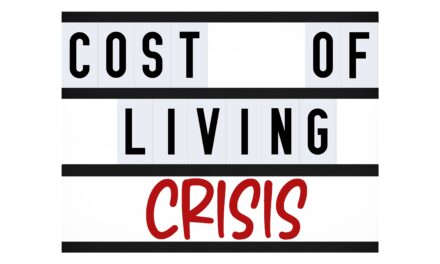In our latest insight article, we look at some of the headline figures behind the rising cost-of-living, and what help workplace pension providers can offer members who are struggling financially.
Prices of every day goods are rising faster than at any time in the past 30 years. In the 12 months to January CPI, which measures price inflation for everyday goods such as food and petrol, rose 5.5% on average. Many economists predict that CPI will peak at around 7% later this year.
Regulated rail fares in England will rise by 3.8% in March, with TV and broadband prices also due to increase at a similar level at that time. Gas and electricity prices are also set to rise for households around the country.
A new price cap for April will affect around 22 million households on out-of-contract tariffs, with the average family seeing a £690 increase in their annual energy bill. The move could see millions enter fuel poverty and debt. Fuel industry experts have predicted that the cap could rise by an additional 20% at the next review in October.
Wage increases are failing to keep up, with real pay showing a fall of 0.8% when taking inflation into account between October and December 2021, according to the Office for National Statistics, leaving many with holes in their finances.
In April, workers and the self-employed will also start paying an additional 1.25p per pound more in National Insurance contributions, under the Health and Social Care Levy, leaving them with lower take-home pay.
As the base rate from the Bank of England rises in an attempt to tackle inflation, the cost of borrowing will also rise leaving millions of Britons with higher mortgage, credit card, and other borrowing costs every month.
The increase in the cost of living and debt, combined with the hike in National Insurance is likely to affect us all, pushing many below the breadline, including those who are members of workplace pension schemes.
The Resolution Foundation think-tank predicts higher energy bills, stagnant wages and tax rises could leave households with a £1,200 a year hit to their incomes.
According to the FCA the pandemic vastly increased the number of vulnerable adults in the UK with 27.7m now having characteristics of vulnerability, which include low financial resilience.
The latest cost increases are likely to have increased the number of UK adults with low financial resilience much further.
In a report we published in 2018 we identified that the average Brit had £326 per month disposable income. Now this will mean that many are likely to have little to no spare disposable income to help them meet the increases in the cost of living.
How can workplace pension providers help? Our data shows that almost all workplace pension providers have a dedicated financial wellness team who members can turn to have detailed conversations and access to services. The services on offer vary between providers and we have written many insights looking at what is on offer in the past.
We are pleased to see that all workplace pension providers offer ‘generic financial education’ for their members, which includes materials looking at areas such as saving, budgeting and building emergency cash funds. Although this is a cornerstone to financial wellness, it is also pretty vanilla.
Everyone has different financial and personal circumstances and therefore personalised financial education can prove invaluable if you are truly looking to make a difference. Our data shows that all providers in our research, other than Royal London and True Potential provide some form of personalised education for their members.
Many workplace pension providers also offer budgeting and goal setting tools to help their members stay in control of their money in such difficult times.
Our data shows that over half (57%) of workplace pension providers provide an automated budget management tool: Aviva Designer, Aviva My Money, Aviva My Money Master Trust, Legal & General, Legal & General Master Trust, Mercer Master Trust, Scottish Widows, Scottish Widows GSIPP, Scottish Widows Master Trust, Standard Life and True Potential.
However, only Mercer Master Trust and True Potential provide real-time updates. And only True Potential’s tool includes a ‘safe to spend’ budget to the user.
An important aspect of budgeting is setting up spending goals. Our data shows that most workplace pension providers offer tools which allow the user to set up spending goals, including retirement goal setting.
The budget management and goal setting tools from Aviva Designer, Aviva My Money, Aviva My Money Master Trust, Legal & General, Legal & General Master Trust, Scottish Widows, Scottish Widows GSIPP, Scottish Widows Master Trust, Standard Life, Standard Life DC Master Trust and True Potential all offer a budget shortfall calculator to help prevent members from falling into debt due to the increases in costs by determining how much extra funds are required.
However, one area which is not as well supported by many workplace pension providers is debt management.
Our data shows that there are currently only two providers who offer debt management tools (Mercer Master Trust and True Potential).
The tools that are on offer are also quite restrictive. The tool from True Potential only offers the facility for users to list their debts within the tool and then view the balance of their debts against their assets. The tools from Mercer Master Trust are more advanced and offer the same as True Potential plus help with IVA set up and Bankruptcy declaration assistance.
No workplace pension provider currently offers a full debt management service or can assist with debt counselling or a debt consolidation.
The provision of debt management tools and budgeting tools could prove to be key differentiators between different workplace pension providers for employers where there are large numbers of members struggling with debt as their living costs surge.
This sits naturally with the use of Open Banking, which as our ratings last year showed, only four providers (Mercer Master Trust, Standard Life, Scottish Widows and True Potential) have in their workplace pension offering. It is our long-standing view that in order for someone to fully understand their income, expenditure and debt, Open Banking (or open finance) is key to gathering data and driving better member outcomes.
We are currently in the process of preparing our 2022 Financial Wellness and Open Finance ratings and more detail will be shared in the coming months.






